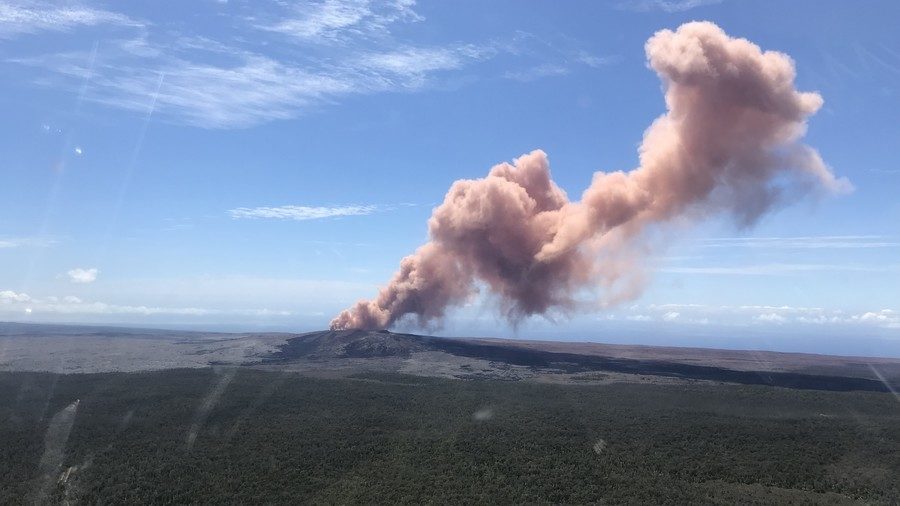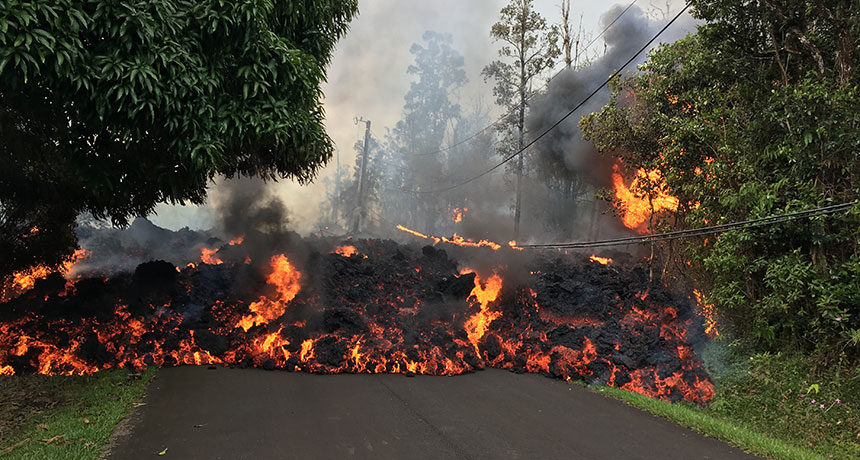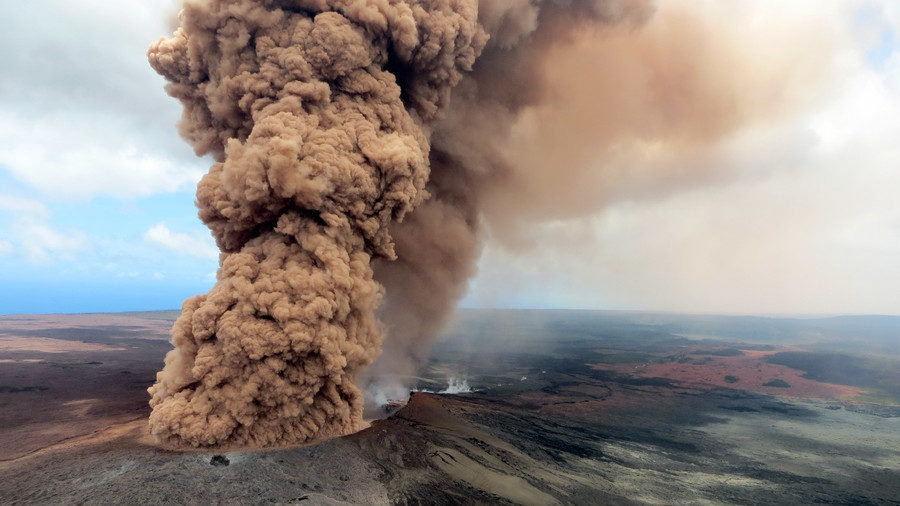
© volcanoes.usgs.gov
People in the vicinity of the Big Island's Kilauea crater are being evacuated as lava threatens residential areas, after the most active volcano in Hawaii was disturbed by hundreds of small quakes and started shooting out ash.
The lava outbreak has reached the Leilani Estates on the Hawaii island, forcing the County Civil Defense to issue
evacuation orders to some 10,000 residents of Puna community into emergency shelter set up by the American Red Cross.
Residents from Luana Street to the end of Leilani Estates are being asked to vacate their homes, Civil Defense confirmed,
according to Khon Channel 2. In addition, areas bordering the East Rift Zone, from Puu Oo crater down to Kapoho, also face a high risk, and are urged to prepare an emergency plan.
Steam and lava emissions are being reported from a crack in Leilani Subdivision in the area of Mohala Street, according to the Department of Public Works. "Residents in Leilani Estates Subdivision on Luana, Makamae, Ho'okupu, Kaupili, Mohala, and lower Leilani Streets down to Highway 132 are required to evacuate the area," authorities advised.
"So there is fountains of lava, tons of lava coming out. Sounds like a jet engine," Pohoa resident Ikaika Marzo
said during a Facebook live broadcast, urging everyone in the area to help their community evacuate safely.



Comment: See also: